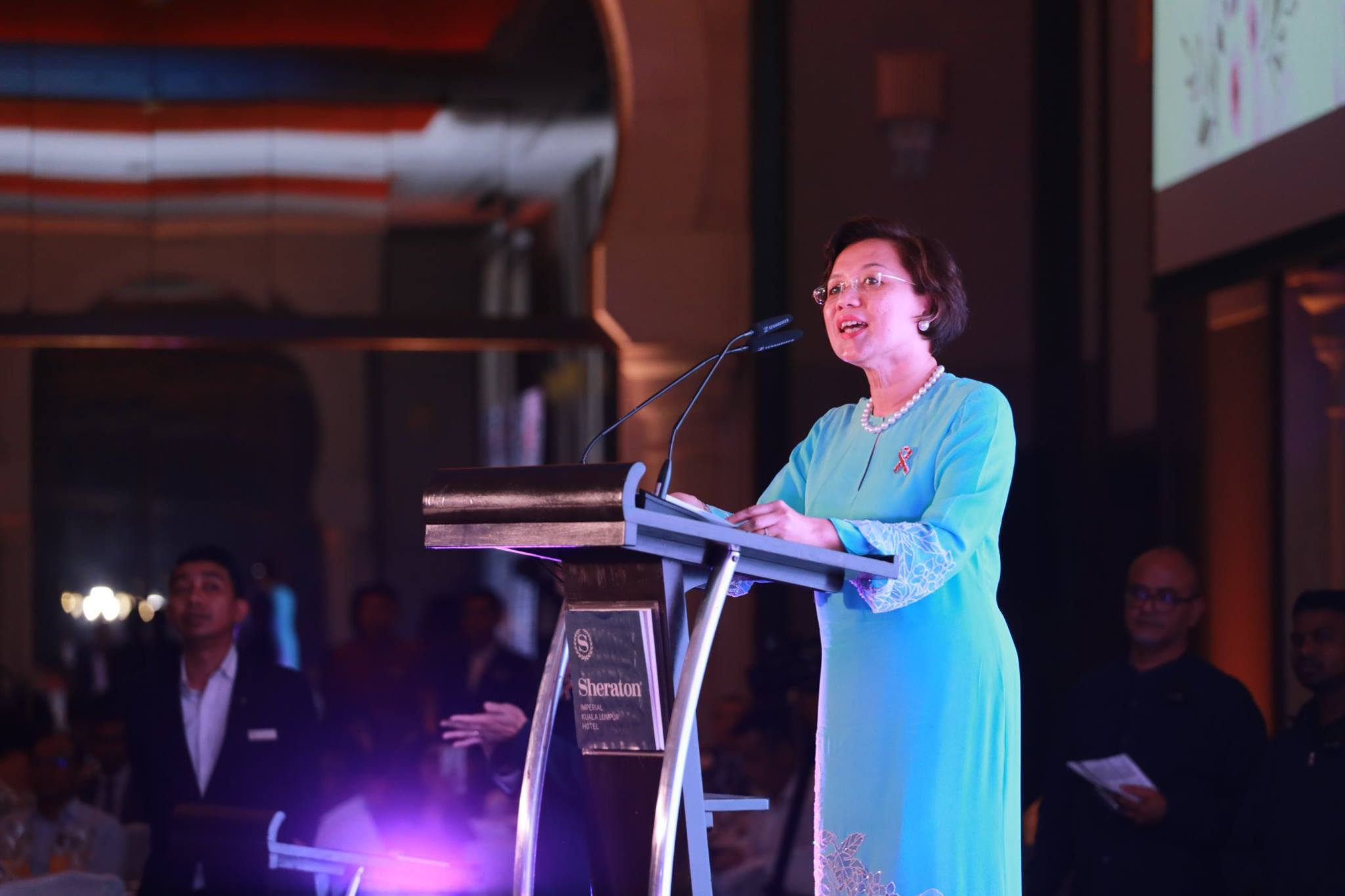KUALA LUMPUR, July 26 — Stigma against HIV/ AIDS in Malaysia is “much stronger” towards lesbian, gay, bisexual and transgender (LGBT) people than drug users, Universiti Malaya’s Dr Adeeba Kamarulzaman said.
The dean of the public university’s faculty of medicine said the government’s harm reduction approach, to some extent, has lessened the stigma in Malaysia against people who use drugs, though stigma remains present.
“But stigma towards LGBT people and sex workers is very deep and ingrained,” Dr Adeeba told TREAT Asia Report in an interview.
Dr Adeeba — who is the first Asian president-elect of International AIDS Society (IAS), the world’s largest association of HIV professionals — said Malaysia, like other countries in the region, was experiencing a rise in the HIV epidemic among men who have sex with men in the past few years, which she attributed partly to the amphetamine epidemic.
“So we’ve still got a lot of work to do. And, of course, stigma and discrimination still drive people underground and form a barrier to testing and treatment.”
Dr Adeeba noted that stigma against HIV was more pervasive among health care workers, as she called for self-testing and the use of technology to bypass the usual service delivery mechanisms.
Universiti Malaya, she said, included interventions on stigma in the medical curriculum, instead of just teaching it on an ad hoc basis.
“One intervention that has been proven to work is for students to have exposure to affected people and groups. So we have sessions with people from the LGBT community, people who use drugs, and people living with HIV.
“Some of the students have led very sheltered and isolated lives, and before this, haven’t met anyone who’s not like them,” she said.
When asked if religious conservatism was a major problem, Dr Adeeba said it remained a problem not just in Malaysia, but around the world.
“And unfortunately, the respect for human life and dignity and compassion that’s very much part of Islam gets drowned out by the negativity towards LGBT people. It’s a problem not just in Islam, but in other religions, too.”
Dr Adeeba Kamarulzaman, International AIDS Society president-elect
The IAS president-elect urged health professionals, particularly, to separate such negative attitudes from their obligations and told them not to be judgmental.
“It’s very difficult to get people to understand and accept that.”
Trans rights activist Rania Zara Medina recently received a lot of flak from Malay-Muslim conservatives over her appointment to Malaysia’s country coordinating mechanism under a secretariat run by the Health Ministry, which applies for funds from international organisation, The Global Fund, for HIV/AIDS issues.
Rania previously told CodeBlue about how transgender people have complained about a few medical staff who refuse to touch them, simply because of their gender identity, when they visit health facilities for general ailments.
Dr Adeeba explained that Malaysia’s HIV epidemic initially affected mostly men because of injecting drug use, before it started affecting the female sexual partners of male injecting drug users.
“So relatively speaking we had fewer affected women at first,” she said, when asked about Malaysia becoming the first country in the Western Pacific region to eliminate mother-to-child transmission of HIV and syphilis.
“On top of that, the Malaysian Ministry of Health took a proactive stance in introducing antenatal screening at a very early stage in the late 1990s, and it also instituted the prevention of mother-to-child transmission protocol. Those efforts have obviously paid off.”
Dr Adeeba also said more than 90 per cent of Malaysia’s funding for HIV treatment and prevention was from local sources.
“We are a middle-, or upper-middle-income country, and have a relatively smaller epidemic than many other countries around us. But we’ve still had that commitment to address it. And we also have a pretty good health infrastructure.
“I think all the necessary factors came together: the political will, the financing, and the infrastructure,” she said.
When pointed out that Asia-Pacific was falling behind some parts of sub-Saharan African in its AIDS response, Dr Adeeba highlighted that the HIV epidemic was concentrated among certain groups in most countries in Asia.
“Because of stigma, you’re not even getting people to the first 90, due to their fear of coming forward,” she said, referring to UNAIDS’ 90-90-90 targets for 2020, where 90 per cent of people living with HIV know their status, 90 per cent of people who know their HIV-positive status are accessing treatment, and 90 per cent of people on treatment have suppressed viral loads.
“The second contributing factor is the income bracket that many of our countries fall into: middle- or upper-middle-income,” Dr Adeeba said, noting that most Asian countries were not among those supported by the US President’s Emergency Plan for AIDS Relief (PEPFAR), and as such, did not receive funding from the United States programme for HIV treatment and prevention scale-up.
Dr Adeeba said those two factors have combined to leave Asia lagging in its HIV/AIDS response.
“So I think those two things have collided to leave us behind. I definitely feel it in Malaysia. We’re grateful for the little bit of funding that the Global Fund has provided.
“But it’s not as much as we need. On the whole, international funding has been decreasing.”








